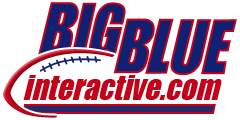Can one of several of you offer a "readers digest" version of the most common advanced baseball metrics whether formula or concept?
I'm not at all math challenged; just not nearly the baseball fan as I am the other sports so I want to defer to you guys.




Link - ( New Window )
There are formulas for Runs Created (that get more and more complex as they consider more and more variables) that are very accurate at predicting how many runs a team will score.
Then, in turn, there are formulas for predicting how many games a team will win based on the ratio of runs scored to runs allowed. So if you have enough of the right data, you can look at that data and say "Oh, that's a 95-win team" or "That team's gonna lose 93 games." Those formulas are also pretty accurate -- it's rare for teams to deviate much from the predicted wins.
Which in turn means that you can assemble a roster based on these metrics and go into the season with a pretty decent idea of how the team should do., and if the team is weak in one area (slugging, OBP, whatever) you can pinpoint that area with metrics and look to improve it.
The downside, in a way, is that baseball has sort of been "solved." Everybody's using the same metrics, and those metrics work. Everybody's trying to maximize the same things and minimize the same other things. So you don't see very different contrasting styles of play anymore. You used to have Whitey Herzog's Cardinals built around speed and the good-pitching-and-a-three-run-homer Orioles under Earl Weaver. Now teams play very much alike.
The X factor is that baseball is still sports. Players' performance isn't entirely predictable. Some guys get hurt. Some guys have career years. Some guys take PEDs. Some guys get old and their performance falls off a cliff. New guys come along. But the stats still work anyway. You can still put together a 25-man roster and make an educated guess about what to expect, and when shit happens, make further educated guesses about how to fix things.
Then you get into the stuff like launch angle, that depend on every pitch of every MLB game being scrutinized by advanced technology. And to some degree that's "solved," too.
WThe downside, in a way, is that baseball has sort of been "solved." Everybody's using the same metrics, and those metrics work. Everybody's trying to maximize the same things and minimize the same other things. So you don't see very different contrasting styles of play anymore. You used to have Whitey Herzog's Cardinals built around speed and the good-pitching-and-a-three-run-homer Orioles under Earl Weaver. Now teams play very much alike.
Are we sure this is due to sabermetrics and not changes in ballparks? The Herzog cardinals (and the Royals teams of that era) played on artificial turf with relatively long distances to the fences. After Camden Yards teams switched to natural grass ballparks with small distances. PED's also would play a factor here.
Would be interesting to see how analytics would select strategies for the 1983 teams based on their home run rates and ballparks.
https://www.fangraphs.com/ - ( New Window )